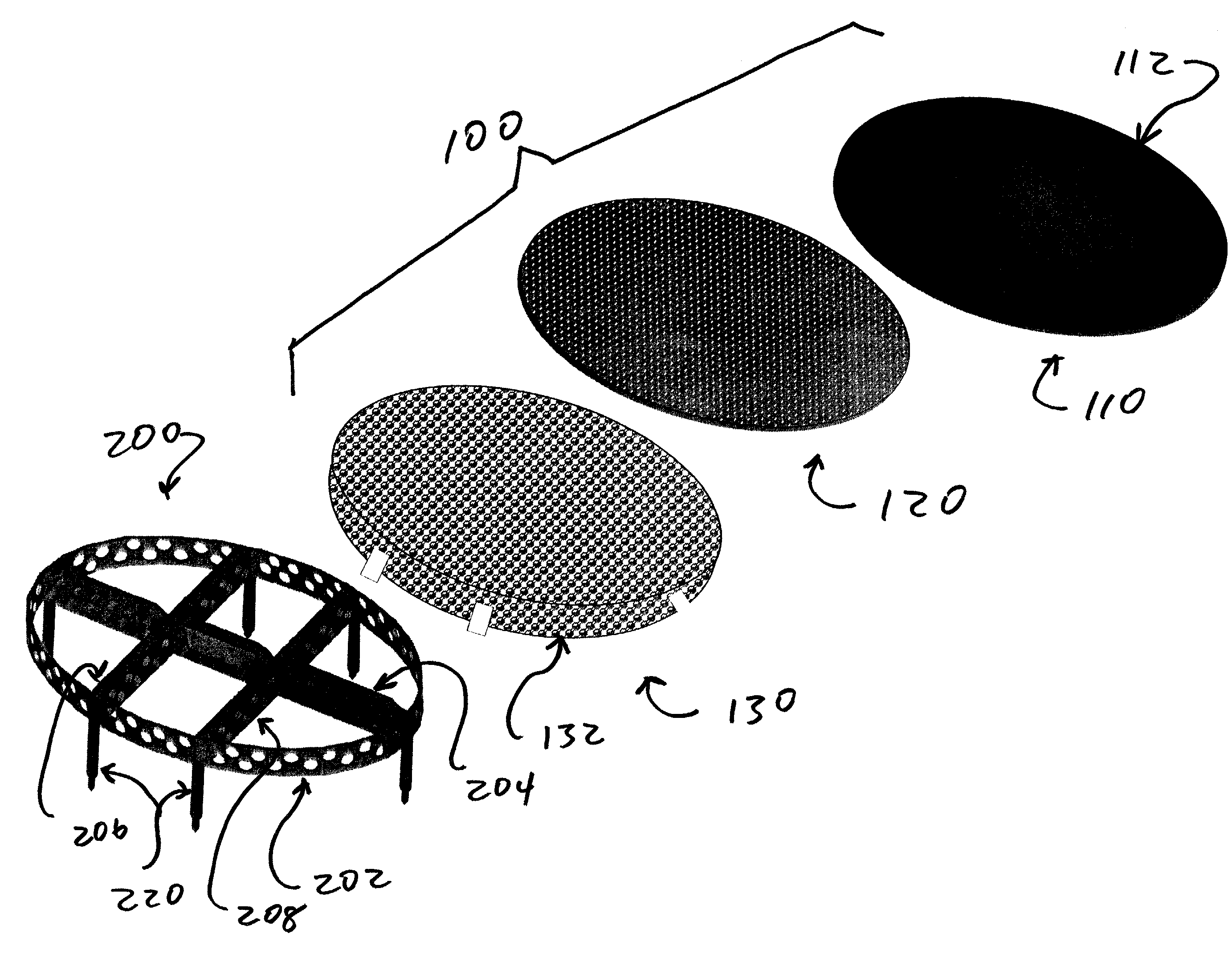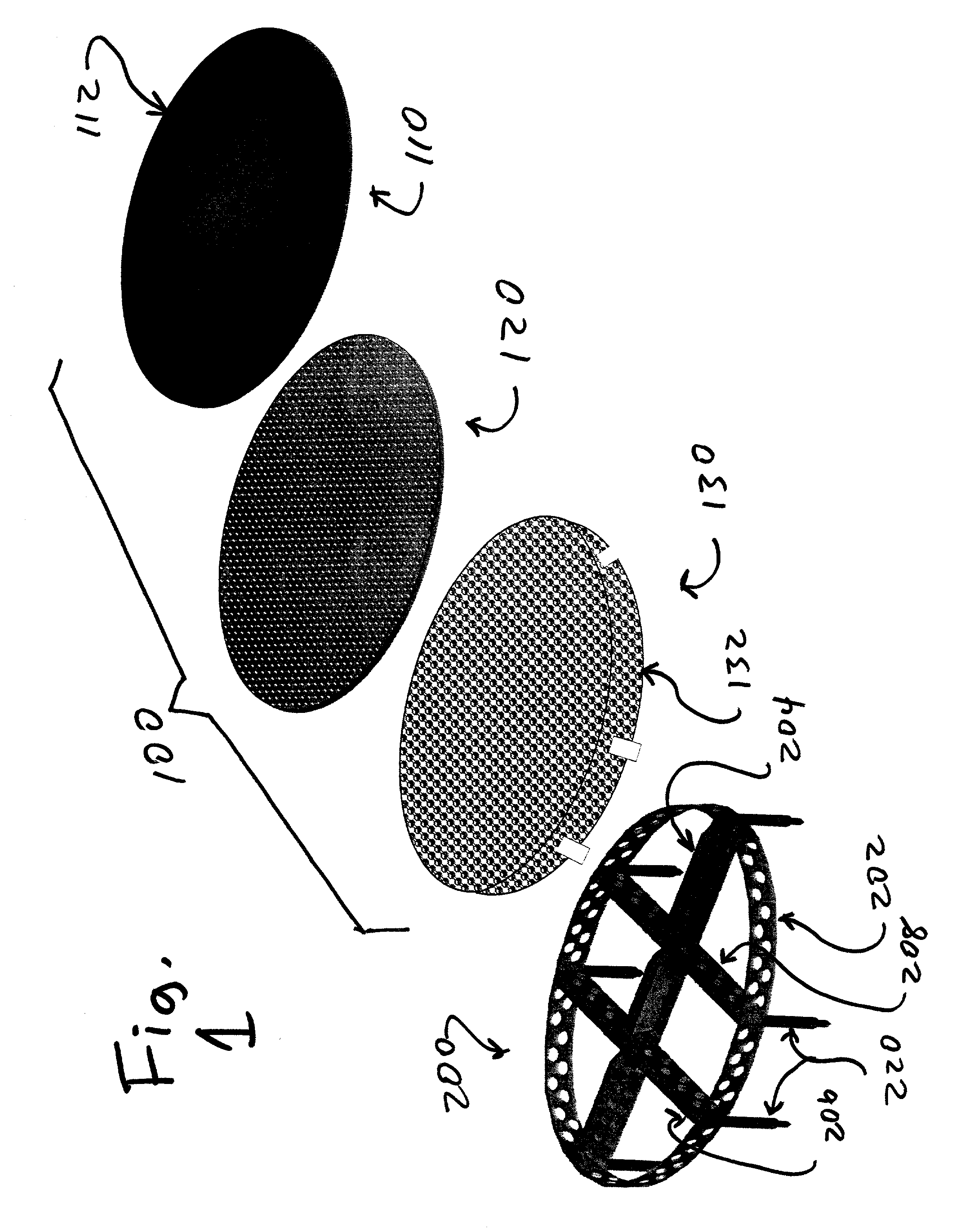Cartilage repair implant with soft bearing surface and flexible anchoring device
a cartilage repair and flexible technology, applied in the field of surgery, can solve the problems of difficult replacement of damaged hyaline cartilage in load-bearing joints (especially the knees, hips, shoulders), and achieve the effects of high porosity, increased strength, and soft and bendabl
- Summary
- Abstract
- Description
- Claims
- Application Information
AI Technical Summary
Benefits of technology
Problems solved by technology
Method used
Image
Examples
Embodiment Construction
[0033]To illustrate the preferred embodiments of this invention, it is assumed that an orthopedic surgeon will use a flexible implant as disclosed herein to treat a patient who is suffering from “Grade 4 chondromalacia” in a knee joint. Upon doing an arthroscopic analysis, the surgeon realizes that part of a medial femoral runner, and part of the medial tibial plateau which rubs against the femoral runner, have both become seriously abraded. On each of those two surfaces, a generally round area of cartilage has been completely worn away, exposing the underlying bone, and generating substantial pain and discomfort which caused the patient to have the knee examined. Each area of denuded bone is surrounded by roughly concentric rings of Grade 3 chondromalacia (which is less severe, with some cartilage remaining over the bone), then Grade 2 (moderate) chondromalacia, then Grade 1 (shallow surface) chondromalacia, and with generally undamaged areas of cartilage surrounding those abraded ...
PUM
| Property | Measurement | Unit |
|---|---|---|
| porosity | aaaaa | aaaaa |
| porosity | aaaaa | aaaaa |
| diameter | aaaaa | aaaaa |
Abstract
Description
Claims
Application Information
 Login to View More
Login to View More - R&D
- Intellectual Property
- Life Sciences
- Materials
- Tech Scout
- Unparalleled Data Quality
- Higher Quality Content
- 60% Fewer Hallucinations
Browse by: Latest US Patents, China's latest patents, Technical Efficacy Thesaurus, Application Domain, Technology Topic, Popular Technical Reports.
© 2025 PatSnap. All rights reserved.Legal|Privacy policy|Modern Slavery Act Transparency Statement|Sitemap|About US| Contact US: help@patsnap.com



